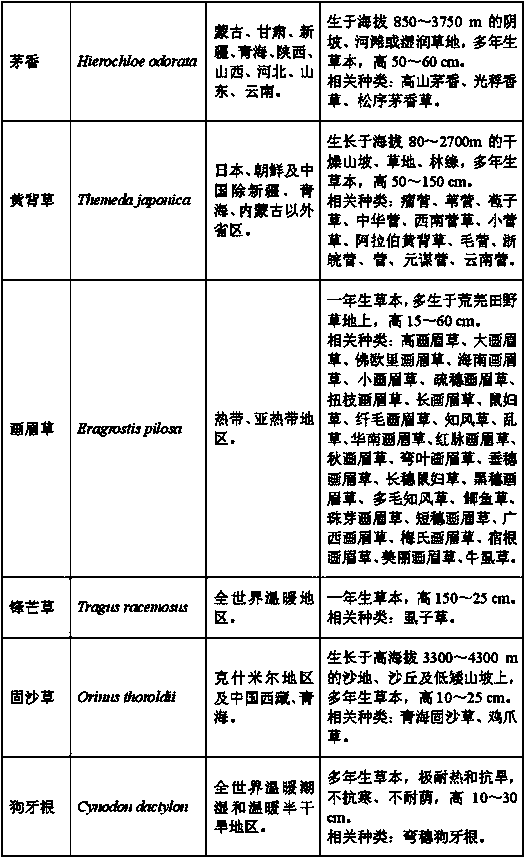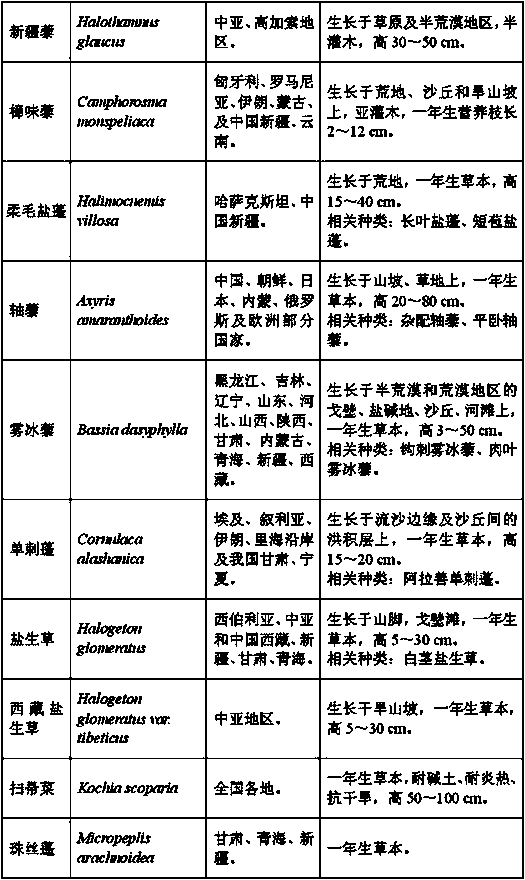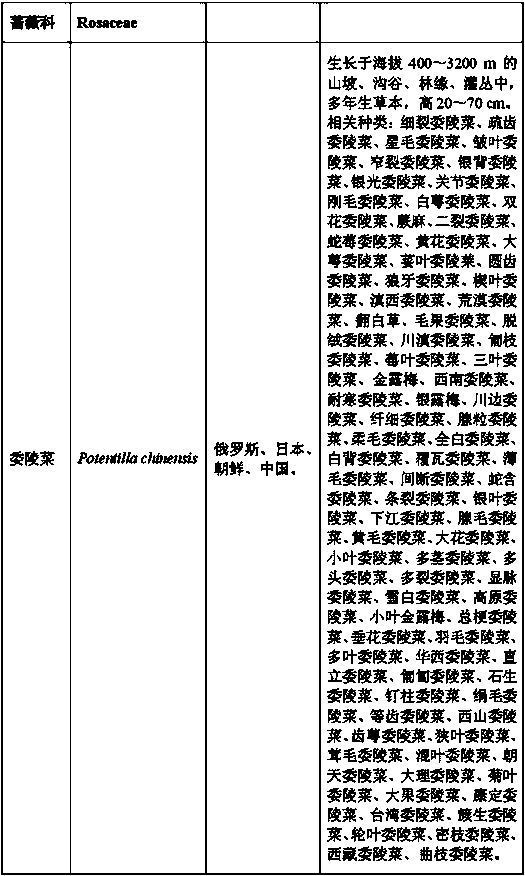Method for addressing global climate change by C4 plants
A C4 plant and climate change technology, applied in the fields of botanical equipment and methods, plant cultivation, application, etc., can solve problems such as soil erosion, affecting industrial and agricultural production and downstream river safety, etc., to increase biomass and carbon sequestration. Effect
- Summary
- Abstract
- Description
- Claims
- Application Information
AI Technical Summary
Problems solved by technology
Method used
Image
Examples
Embodiment 1
[0144] Embodiment 1 The method for using C4 plants to cope with global climate change comprises the following steps:
[0145] (1) According to annual precipitation, annual evaporation, annual dryness, annual growth accumulated temperature, annual average temperature, and annual sunshine, divide the planting area of C4 plants;
[0146] (2) Screen C4 plants with strong stress resistance and large biomass;
[0147] (3) preparing C4 plant cultivation substrate;
[0148] (4) Plant C4 plants scientifically and mow at the right time to increase biomass and carbon sequestration;
[0149] (5) Control carbon release by sequestering C4 plants.
Embodiment 2
[0150] Embodiment 2 The C4 plant screening method for coping with global climate change comprises the following steps:
[0151] (1) Measure the average biomass of aboveground parts of plants in the area;
[0152] For herbs, select 5-10 representative plots according to 1 m×1 m or 0.5 m×0.5 m, harvest the aboveground parts, and weigh the fresh weight; dry the aboveground parts at 80°C or 105°C until constant weight, Weigh out the dry weight; calculate the average biomass of aboveground parts of herbaceous plants in this area;
[0153] For trees and shrubs, select 5 to 10 representative plots of 10 m×10 m or 5 m×5 m, count the density, coverage and height of plants in the plots, and calculate the aboveground parts of trees and shrubs in the area. average biomass;
[0154] (2) According to the characteristics of plant growth, select C4 plants suitable for the growth in this area;
[0155] (3) Selecting C4 plants with high biomass from the C4 plants in step (2) according to the...
Embodiment 3
[0159] Example 3 C4 plants coping with global climate change
[0160] C4 plants that respond to global climate change: Azalea, Baiguding, Huangxixin, Sapona, breviphyllum, Suaeda, Chenopodium, Amarina, Haloxylon, Xinjiang Chenopodium, Zhangwei Chenopodium, pilose Salsa , Tribulus tribulus, Misty ice quinoa, Single thorn, Salt grass, Tibetan salt grass, Broom vegetable, Hetonia, Pearl silk, Kochia, pig hair dish, Tribulus terrestris, camel's hoof petal, thick-stem overlord, Gobi Overlord, fast-growing overlord, amaranth, white amaranth, splendor amaranth, amaranth, Polygala, purslane, Oxytropis lanceolata, Cassia lanceolata, pearl grass, brocade grass, green jade tree, flying grass, seaside euphorbia , dwarf euphorbia, vasong, dog tongue grass, Alkali Artemisia annua, Artemisia annua, Artemisia annua, clematis, staghorn grass, Senecio, meadow chrysanthemum, sunflower, saltland chrysanthemum, feather split twist head, golden chrysanthemum, Guayule, edelweiss, sedge, nectar, whi...
PUM
 Login to View More
Login to View More Abstract
Description
Claims
Application Information
 Login to View More
Login to View More - R&D
- Intellectual Property
- Life Sciences
- Materials
- Tech Scout
- Unparalleled Data Quality
- Higher Quality Content
- 60% Fewer Hallucinations
Browse by: Latest US Patents, China's latest patents, Technical Efficacy Thesaurus, Application Domain, Technology Topic, Popular Technical Reports.
© 2025 PatSnap. All rights reserved.Legal|Privacy policy|Modern Slavery Act Transparency Statement|Sitemap|About US| Contact US: help@patsnap.com



